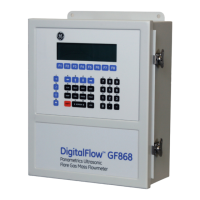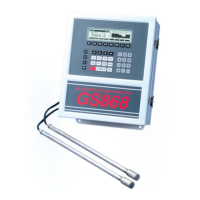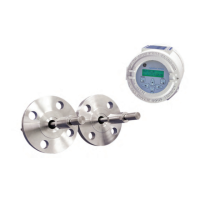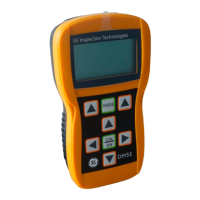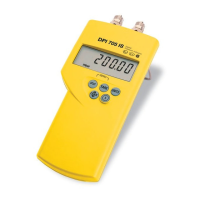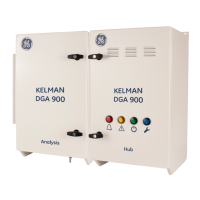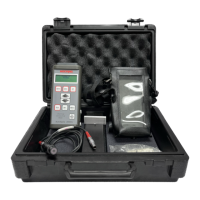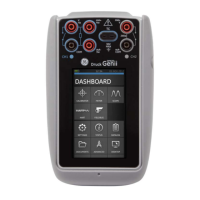March 2008
2-12 Displaying Data
Displaying Transducer
Signals (cont.)
The typical display screen shown has the Sup transducer signal listed
to the left of the y-axis and there is a message line below the graph
that initially indicates the starting date and time of the graphed signal.
Notice that most of the locator bar has been replaced by a status line
in standard video that shows the signal amplitude and the time (in
microseconds) of the measurement at the current cursor location.
However, there is still an inverse video pointer at the far right of this
line to indicate that additional option bar choices are available. See
Table 2-7 below for a complete description of the nine functions
available on the option bar.
In addition to the functions available on the option bar, some of the
numeric keys are used to specify which transducer signal is displayed
and to scale the resulting graph. Table 2-8 on page 2-13 lists these
functions.
Table 2-7: Graphical Log Display Options
Option Bar Choice Description
[F1] = <CURS Move the cursor to the left and display
the amplitude and time in the status line:
(i.e.
107 686.798mi)
[F2] = CURS> Move the cursor to the right and display
the amplitude and time in the status line:
(i.e.
107 686.798mi)
[F3] = <PAGE Display the previous page
[F4] = PAGE> Display the next page
[→] + [F1] = START Move the cursor to the start of the
current page and post the starting date
and time in the message line:
(i.e.
ST: 451.798usec)
[→] + [F2] = END Move the cursor to the end of the current
page and post the ending date and time
in the message line:
(i.e.
END: 744.298usec)
[→] + [F3] = YMAX Display the maximum Y value, which is
set to 128 divisions in arbitrary units, in
the message line.
[→] + [F4] = T INC Display the time increment value in the
message line. This is based on the
frequency of the transducers and would
equal 0.125 μsec for a 1 MHz transducer.
[←] + [F1] = EXIT Leave the graphical SIGNL display and
return the display to the previous data
format. (The
[EXIT] key on the keypad will
also perform this function.)

